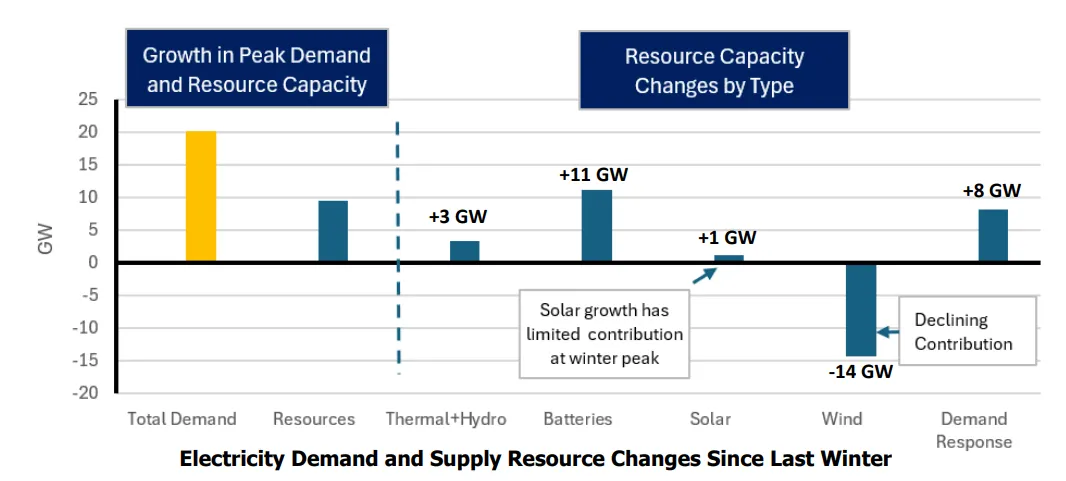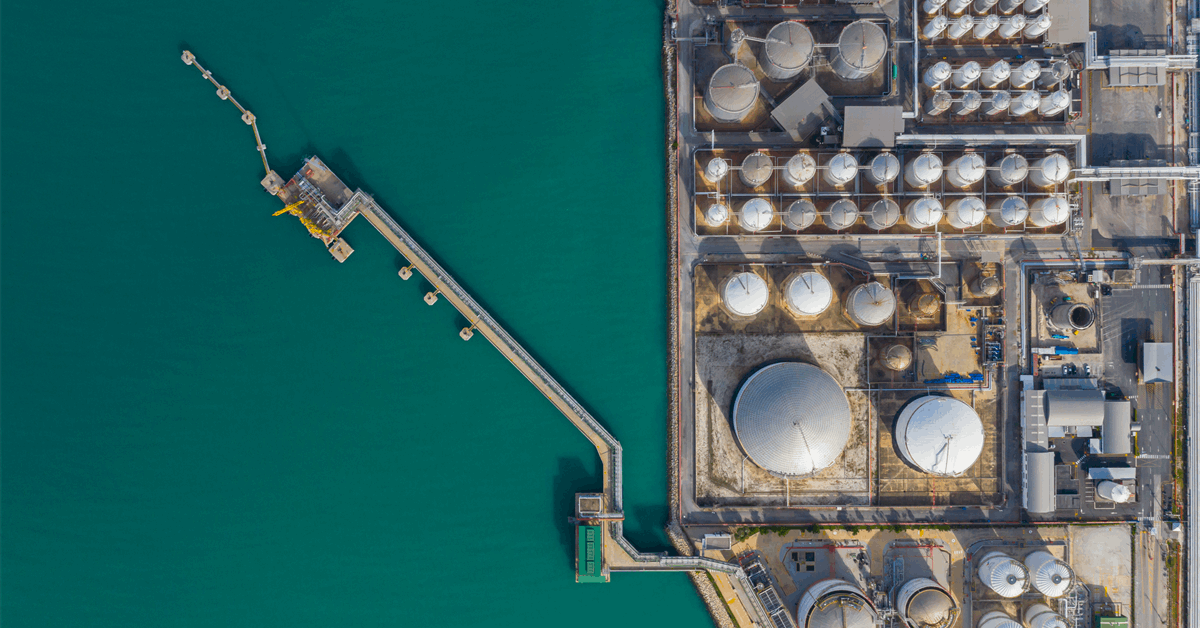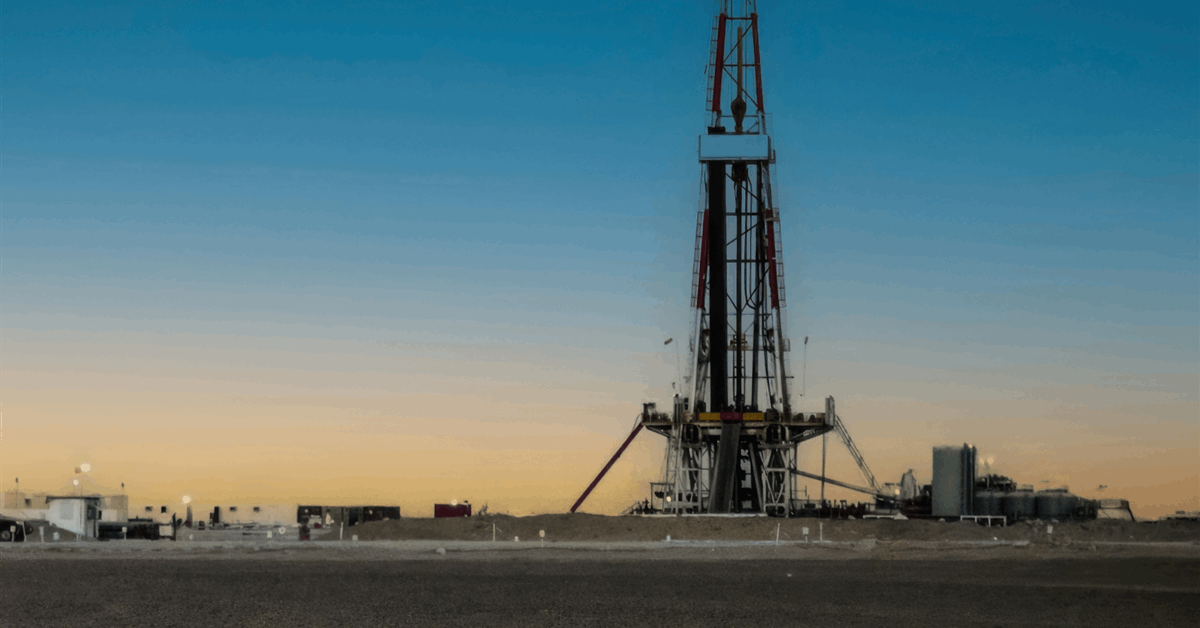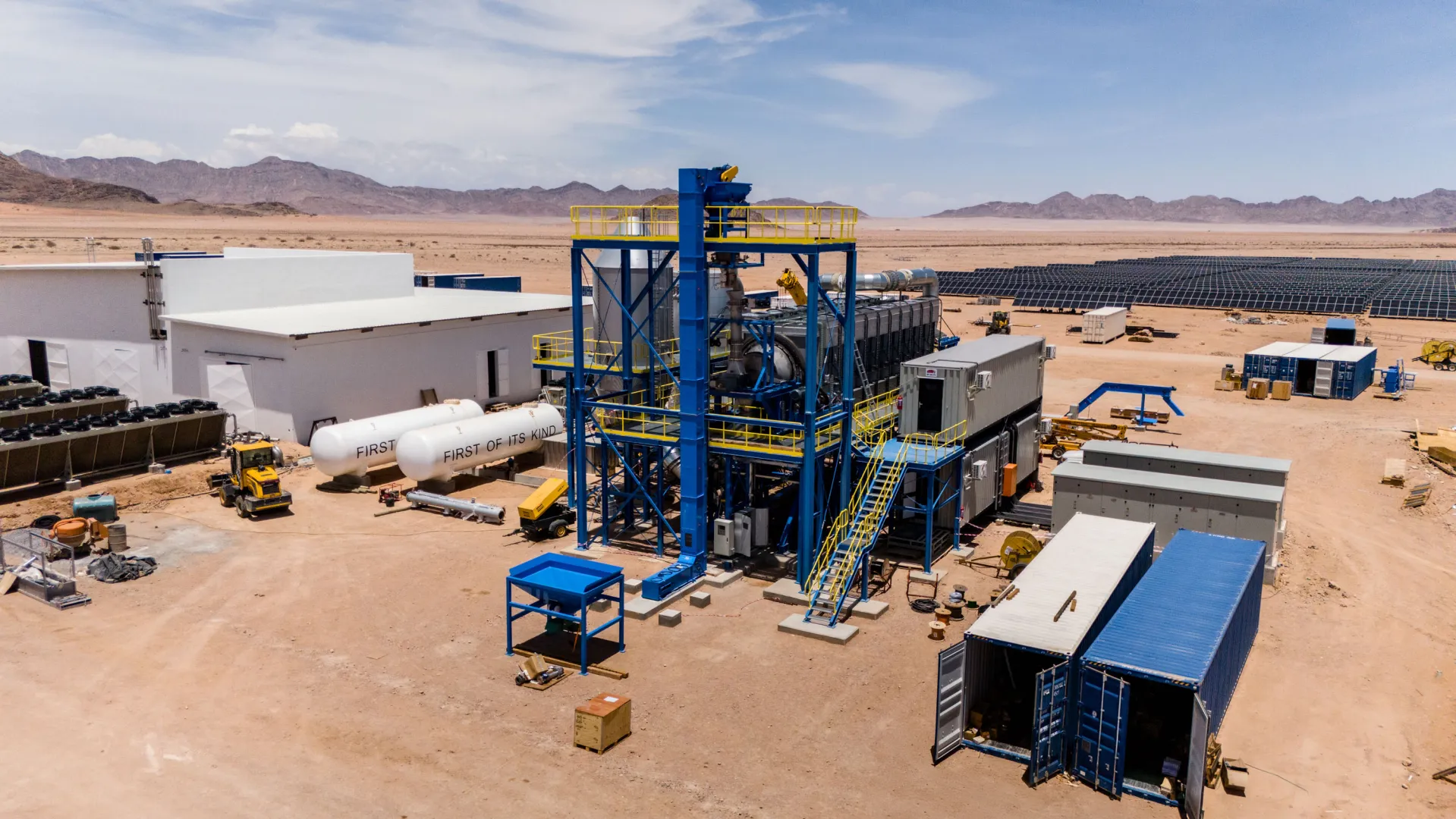Dive Brief:
- Peak demand on the bulk power system will be 20 GW higher this winter than last, but total resources to meet the peak have only increased 9.4 GW, according to a report released Tuesday by the North American Electric Reliability Corp.
- Despite the mismatch, all regions of the bulk power system should have sufficient resources for expected peak demand this winter, NERC said in its 2025-2026 Winter Reliability Assessment. However, several regions could face challenges in the event of extreme weather.
- There have been 11 GW of batteries and 8 GW of demand response resources added to the bulk power system since last winter, NERC said. Solar, thermal and hydro have also seen small additions, but contributions from wind resources are 14 GW lower following capacity accounting changes in some markets.
Dive Insight:
NERC officials described a mixed bag heading into the winter season.
“The bulk power system is entering another winter with pockets of elevated risk, and the drivers are becoming more structural than seasonal,” said John Moura, NERC’s director of reliability assessments and performance analysis. “We’re seeing steady demand growth, faster than previous years, landing on a system that’s still racing to build new resources, navigating supply chain constraints and integrating large amounts of variable, inverter-based generation.”
Aggregate peak demand across NERC’s footprint will be 20 GW, or 2.5%, higher than last winter. “Essentially, you have a doubling between the last several successive [winter reliability assessments],” said Mark Olson, NERC’s manager of reliability assessment.
Nearly all of NERC’s assessment areas “are reporting year-on-year demand growth with some forecasting increases near 10%,” the reliability watchdog said.
The U.S. West, Southeast and Mid-Atlantic — areas with significant data center development — have highest growth rates, NERC said. “Demand growth is contributing to lower reserve margins and signaling need for more resources,” according to a presentation on the report.
But some types of new resource additions are slow to come online. Just 3 GW of thermal or hydro generation was added since last winter. Solar nameplate capacity rose 11 GW since last winter, but is expected to contribute only about 1 GW towards meeting peak demand.

Bringing resources online more quickly will require changes to policy and markets, according to the Electric Power Supply Association.
“We need permitting reform, predictable market rules, and policies that support private investment,” EPSA President and CEO Todd Snitchler said in a statement. The group represents competitive generators.
An increasingly complex resource mix “brings additional challenges for operators,” NERC said, particularly in extreme or extended cold weather.
In the Maritimes region, imports may be needed to meet peak demand, NERC said. New England could see gas shortages in extended extreme conditions. In areas of the Southeast, reserves may not be sufficient for high demand scenarios, or resource shortages may occur during early morning hours with high demand.
In the Electric Reliability Council of Texas footprint, “strong load growth is contributing to continued risk of supply shortfalls in extreme cold,” NERC said. In parts of the Northwest, resources may not be sufficient during wide-area cold weather that causes thermal plant outages and wind performance issues.
“Winter reliability is improving in some aspects, but the system is still being tested by conditions outside historical norms,” Moura said.
NERC’s assessment includes several recommendations: grid operators should review seasonal operating plans; generation owners should complete winter readiness and weatherization efforts; and balancing authorities should implement generator fuel surveys to monitor the adequacy of fuel supplies.
“Gas production and supplies going to generators strongly impacts how well the bulk power system can perform during winter conditions,” Olson said. “These two systems are inextricably linked.”






















